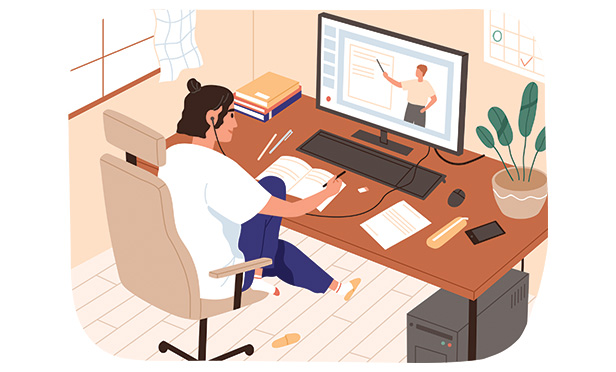
Unintended consequences:
Seeing clearly: The lack of commuter traffic sent pollution rates plummeting in major cities around the world, including smog-laden Los Angeles. Residents were able to see clear blue skies and enjoy record-setting stretches of "good" air quality days.
Social isolation: For those with school-aged children, a spouse or roommates, the lack of everyday watercooler chit-chat may be less noticeable, but it's still taking a toll. Health care professionals have begun to warn about a coming "mental health pandemic" driven by isolation, employee burnout and stress.
Benefits calibration: Employee perks like free parking, free snacks and onsite fitness centers have lost their allure. Video streaming services have become a popular replacement, but employers are still struggling to find a new mix of perks to engage their remote workforce.
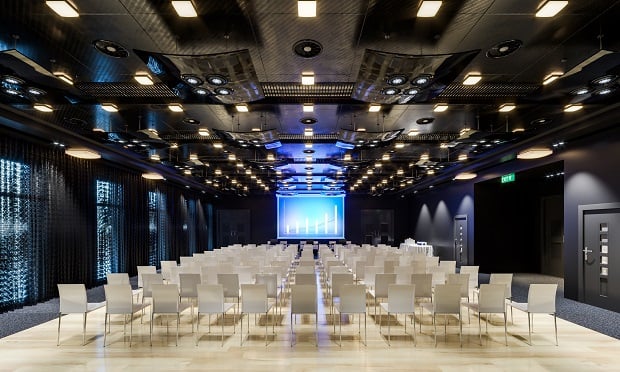
1. Goodbye, in-person conferences. Hello, virtual events.
Stymied by travel restrictions and limitations on gathering sizes, many industry events were forced to either cancel or switch to a digital platform. Organizers quickly moved into online-mode for conferences that annually attracted hundreds or thousands of attendees and presenters.
Outcomes:
Content integrity: Conference planners are finding they can deliver the same high-quality presenter information to those who depend on the conference environment to keep up with the latest industry trends and developments.
Better use of funds: Opportunity to focus conference dollars on content and communications, rather than the venue and all those onsite costs.
Time savings: Demonstration of the power of technology to imitate a live event with no travel involved.
Environmental impact: Conference materials can all be delivered in a paperless format. No food and related waste.
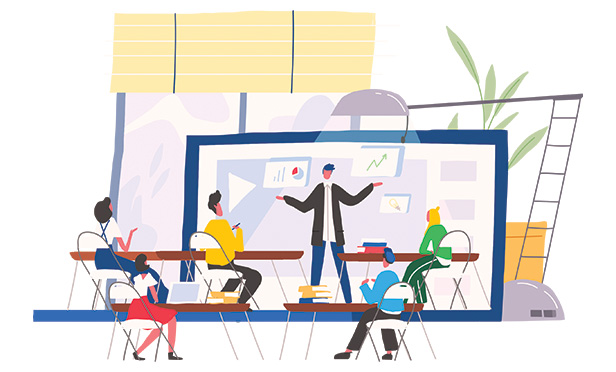
Unintended consequences:
No open bar: Attendees had to unwind from daily sessions at their own expense.
No business card exchanges: Those often serendipitous networking encounters that can lead to business, a new job or a long-term friendship were lost.
Better absorption of 8 a.m, presenter information: Since there was no group evening romp through the conference city, opening speakers leave a greater impression than in previous conference years.

2. Goodbye to long, boring meetings. Hello, Zoom meetings.
Whether it was a canceled meeting with a prospective client, or a staff meeting that could no longer be held in the office, businesses had to get used to a new way of communicating. Despite a few early stumbles, Zoom emerged as the platform of choice for most virtual meetings.
Outcomes:
Zoom is essentially face-to-face: People's health is respected while a high-level discussion about plan design and costs still occurs. Folks still feel free to catch up and gradually move into the work discussion. Meeting attendance is often better: Invitees tend to hop on a Zoom call who might have found an excuse to miss a meeting at the office. No one has an excuse to be late.
Questions are not lost during discussions: The "chat" and "Q&A" features allow attendees to capture thoughts for later discussion without interrupting the flow. Meetings are recorded: Not sure what was said or who agreed to do something? Play back the recording.

Unintended consequences:
Parenting flaws revealed: We've all learned that our children have not been raised to respect their parents, as they scream at us from the kitchen.
Stealth attention diversion. I can check my phone and you won't see me! Admit it, you have that one client who keeps glancing down at his phone and smiling, and has not heard half of what you've said.
Advertisement

3. Goodbye, doctor's office waiting rooms. Hello, telehealth.
To reduce trips to the clinic, many health care providers increased virtual options for patients to contact clinicians and to exchange information.Outcomes:
Increased customer service: Rapid responses to simple requests or questions from patients via the patient portal enhanced the customer experience and reduced trips to the clinic. Increased patient knowledge: Test results shared securely through a patient portal empowered patients to better understand their own health condition, ask better questions and make better health care decisions.
Validation of "house call" model: The model of the physician caring for the homebound patient in place rather than in-clinic gained substantial validation. While this version still falls short of a doctor actually making a house call, it adopts many features of the re-emerging house call model: Zoom-type visits with clinicians, sharing data over a secure line, the reporting of health metrics from patient to doctor in real time via the portal, and much more.
Reduced clinic workload: By moving many of the brick-and-mortar functions online, clinics reduced the need for staff, cut costs related to having patients in the building, and freed up physician time.
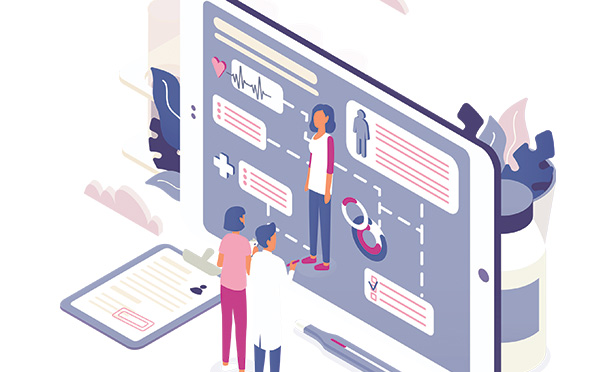
Unintended consequences:
Billing disruption: By moving so many functions online, clinic finances were disrupted. Copays and related patient charges for in-clinic services were reduced, probably permanently. Insurers and providers were forced to re-examine coding and other aspects of their businesses. Could this move the system further from the fee-for-service model?
Heightened risk of data/privacy breaches: With more information and discussions moving to the portal, security will undoubtedly be tested with breaches. Are health care providers on high alert to respond?
Out-of-date magazines: With fewer patients in the waiting room, clinic managers will be less likely to refresh the magazine stash designed to allay patient anxiety. Patients may be transported back to a past that seems vaguely familiar before they realize this has happened.

4. Goodbye, "War for talent." Hello, furloughs and mass layoffs.
Unprecedented workforce disruptions left HR and plan administrators scrambling. Layoffs were done by classification, rather than seniority. People who worked from the office now work from home, perhaps permanently.Outcomes for plan administrators:
Who's in, who's out: They were forced to determine how benefits applied to those on furlough versus those laid off.
Youth movement: Some plans saw an influx of young people seeking health coverage as dependents of employees. Many young people under the age of 25 lost jobs with health coverage and are now joining their parents' employer plan. What will be the ramifications of this?
Read the contract: For plans whose members belong to a labor union, terms had to be negotiated—sometimes outside the union contract—in order to keep people healthy or to ensure rehiring goes smoothly if/when the economy picks up.
Unintended consequences: For self-insured plans, can the plan survive mass layoffs? Will reinsurance coverage be triggered? Then what?
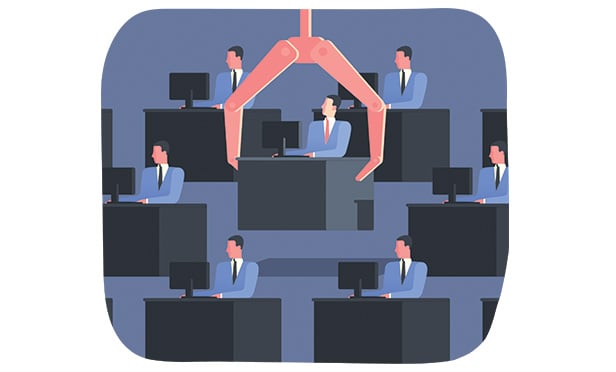
Outcomes for HR:
Enrollment experience: As the annual enrollment process moved from the conference room to Zoom at home, what were the outcomes? Did it require more or less work on HR's part? Were plan members more or less satisfied with the experience?
Talent acquisition: This just got more complicated. After years of recruiting wars, key personnel acquired or retained were out of luck if they had the wrong job description. How does HR identify top talent, sidelined due to occupation, to be priority rehires if and when they look to expand again? Are skills transferable to ongoing jobs? What about recruiting laid off top performers at rival firms?
Unintended consequences: As usual for HR, more paperwork, longer hours, more headaches.
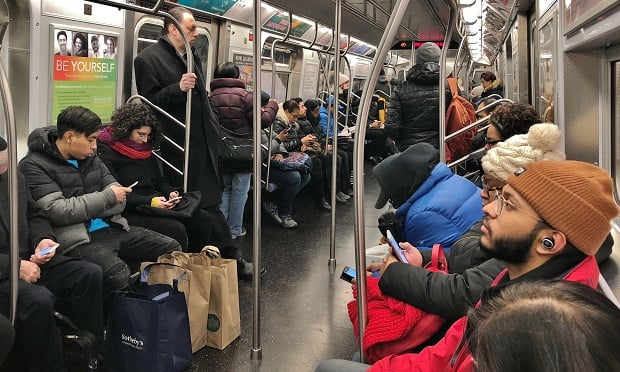
5. Goodbye, commuter trains and rush hour traffic. Hello, pajama pants.
The transition to remote work was sudden and swift, but more successful than many employers anticipated. But will we one day be bidding farewell to the sudden increase in remote working? Will it drop off once a vaccine is available, or is it here to stay?Outcomes:
Rewrite time: Employee manuals had to be rewritten, as workers shifted en masse from the office to home, perhaps permanently. Questions around data security, liability, time off, "office" hours, and more needed to be answered.
Reduced overhead/space: Cost-savings accrued to the company to offset declining revenue. If flexibility exists to downsize brick-and-mortar, companies made the move, even if it meant buying out a lease. Many employers are integrating significant offsite work into their future planning.
Remote management: Was a new consulting field created: How to manage a home-based workforce? Tradition-bound managers had difficulty adapting. Those who championed remote work pre-COVID had their theory ("People will be more productive!") put to the test big-time. Regardless, remote management skills had to be identified and mastered.
Advertisement

Unintended consequences:
Seeing clearly: The lack of commuter traffic sent pollution rates plummeting in major cities around the world, including smog-laden Los Angeles. Residents were able to see clear blue skies and enjoy record-setting stretches of "good" air quality days.
Social isolation: For those with school-aged children, a spouse or roommates, the lack of everyday watercooler chit-chat may be less noticeable, but it's still taking a toll. Health care professionals have begun to warn about a coming "mental health pandemic" driven by isolation, employee burnout and stress.
Benefits calibration: Employee perks like free parking, free snacks and onsite fitness centers have lost their allure. Video streaming services have become a popular replacement, but employers are still struggling to find a new mix of perks to engage their remote workforce.

1. Goodbye, in-person conferences. Hello, virtual events.
Stymied by travel restrictions and limitations on gathering sizes, many industry events were forced to either cancel or switch to a digital platform. Organizers quickly moved into online-mode for conferences that annually attracted hundreds or thousands of attendees and presenters.
Outcomes:
Content integrity: Conference planners are finding they can deliver the same high-quality presenter information to those who depend on the conference environment to keep up with the latest industry trends and developments.
Better use of funds: Opportunity to focus conference dollars on content and communications, rather than the venue and all those onsite costs.
Time savings: Demonstration of the power of technology to imitate a live event with no travel involved.
Environmental impact: Conference materials can all be delivered in a paperless format. No food and related waste.

Unintended consequences:
No open bar: Attendees had to unwind from daily sessions at their own expense.
No business card exchanges: Those often serendipitous networking encounters that can lead to business, a new job or a long-term friendship were lost.
Better absorption of 8 a.m, presenter information: Since there was no group evening romp through the conference city, opening speakers leave a greater impression than in previous conference years.

2. Goodbye to long, boring meetings. Hello, Zoom meetings.
Whether it was a canceled meeting with a prospective client, or a staff meeting that could no longer be held in the office, businesses had to get used to a new way of communicating. Despite a few early stumbles, Zoom emerged as the platform of choice for most virtual meetings.
Outcomes:
Zoom is essentially face-to-face: People's health is respected while a high-level discussion about plan design and costs still occurs. Folks still feel free to catch up and gradually move into the work discussion. Meeting attendance is often better: Invitees tend to hop on a Zoom call who might have found an excuse to miss a meeting at the office. No one has an excuse to be late.
Questions are not lost during discussions: The "chat" and "Q&A" features allow attendees to capture thoughts for later discussion without interrupting the flow. Meetings are recorded: Not sure what was said or who agreed to do something? Play back the recording.

Unintended consequences:
Parenting flaws revealed: We've all learned that our children have not been raised to respect their parents, as they scream at us from the kitchen.
Stealth attention diversion. I can check my phone and you won't see me! Admit it, you have that one client who keeps glancing down at his phone and smiling, and has not heard half of what you've said.
Advertisement

3. Goodbye, doctor's office waiting rooms. Hello, telehealth.
To reduce trips to the clinic, many health care providers increased virtual options for patients to contact clinicians and to exchange information.Outcomes:
Increased customer service: Rapid responses to simple requests or questions from patients via the patient portal enhanced the customer experience and reduced trips to the clinic. Increased patient knowledge: Test results shared securely through a patient portal empowered patients to better understand their own health condition, ask better questions and make better health care decisions.
Validation of "house call" model: The model of the physician caring for the homebound patient in place rather than in-clinic gained substantial validation. While this version still falls short of a doctor actually making a house call, it adopts many features of the re-emerging house call model: Zoom-type visits with clinicians, sharing data over a secure line, the reporting of health metrics from patient to doctor in real time via the portal, and much more.
Reduced clinic workload: By moving many of the brick-and-mortar functions online, clinics reduced the need for staff, cut costs related to having patients in the building, and freed up physician time.

Unintended consequences:
Billing disruption: By moving so many functions online, clinic finances were disrupted. Copays and related patient charges for in-clinic services were reduced, probably permanently. Insurers and providers were forced to re-examine coding and other aspects of their businesses. Could this move the system further from the fee-for-service model?
Heightened risk of data/privacy breaches: With more information and discussions moving to the portal, security will undoubtedly be tested with breaches. Are health care providers on high alert to respond?
Out-of-date magazines: With fewer patients in the waiting room, clinic managers will be less likely to refresh the magazine stash designed to allay patient anxiety. Patients may be transported back to a past that seems vaguely familiar before they realize this has happened.

4. Goodbye, "War for talent." Hello, furloughs and mass layoffs.
Unprecedented workforce disruptions left HR and plan administrators scrambling. Layoffs were done by classification, rather than seniority. People who worked from the office now work from home, perhaps permanently.Outcomes for plan administrators:
Who's in, who's out: They were forced to determine how benefits applied to those on furlough versus those laid off.
Youth movement: Some plans saw an influx of young people seeking health coverage as dependents of employees. Many young people under the age of 25 lost jobs with health coverage and are now joining their parents' employer plan. What will be the ramifications of this?
Read the contract: For plans whose members belong to a labor union, terms had to be negotiated—sometimes outside the union contract—in order to keep people healthy or to ensure rehiring goes smoothly if/when the economy picks up.
Unintended consequences: For self-insured plans, can the plan survive mass layoffs? Will reinsurance coverage be triggered? Then what?

Outcomes for HR:
Enrollment experience: As the annual enrollment process moved from the conference room to Zoom at home, what were the outcomes? Did it require more or less work on HR's part? Were plan members more or less satisfied with the experience?
Talent acquisition: This just got more complicated. After years of recruiting wars, key personnel acquired or retained were out of luck if they had the wrong job description. How does HR identify top talent, sidelined due to occupation, to be priority rehires if and when they look to expand again? Are skills transferable to ongoing jobs? What about recruiting laid off top performers at rival firms?
Unintended consequences: As usual for HR, more paperwork, longer hours, more headaches.

5. Goodbye, commuter trains and rush hour traffic. Hello, pajama pants.
The transition to remote work was sudden and swift, but more successful than many employers anticipated. But will we one day be bidding farewell to the sudden increase in remote working? Will it drop off once a vaccine is available, or is it here to stay?Outcomes:
Rewrite time: Employee manuals had to be rewritten, as workers shifted en masse from the office to home, perhaps permanently. Questions around data security, liability, time off, "office" hours, and more needed to be answered.
Reduced overhead/space: Cost-savings accrued to the company to offset declining revenue. If flexibility exists to downsize brick-and-mortar, companies made the move, even if it meant buying out a lease. Many employers are integrating significant offsite work into their future planning.
Remote management: Was a new consulting field created: How to manage a home-based workforce? Tradition-bound managers had difficulty adapting. Those who championed remote work pre-COVID had their theory ("People will be more productive!") put to the test big-time. Regardless, remote management skills had to be identified and mastered.
Advertisement

Unintended consequences:
Seeing clearly: The lack of commuter traffic sent pollution rates plummeting in major cities around the world, including smog-laden Los Angeles. Residents were able to see clear blue skies and enjoy record-setting stretches of "good" air quality days.
Social isolation: For those with school-aged children, a spouse or roommates, the lack of everyday watercooler chit-chat may be less noticeable, but it's still taking a toll. Health care professionals have begun to warn about a coming "mental health pandemic" driven by isolation, employee burnout and stress.
Benefits calibration: Employee perks like free parking, free snacks and onsite fitness centers have lost their allure. Video streaming services have become a popular replacement, but employers are still struggling to find a new mix of perks to engage their remote workforce.
© Touchpoint Markets, All Rights Reserved. Request academic re-use from www.copyright.com. All other uses, submit a request to [email protected]. For more inforrmation visit Asset & Logo Licensing.
Dan Cook

Dan Cook is a journalist and communications consultant based in Portland, OR. During his journalism career he has been a reporter and editor for a variety of media companies, including American Lawyer Media, BusinessWeek, Newhouse Newspapers, Knight-Ridder, Time Inc., and Reuters. He specializes in health care and insurance related coverage for BenefitsPRO.






